Introduction
Foot health is a fundamental aspect of our overall well-being, yet it’s an area that many of us tend to neglect. One of the key components in maintaining foot health is understanding and providing proper arch support. The arch of the foot, often unnoticed, plays a pivotal role in our daily activities, especially in walking and standing.
The purpose of this article is to unlock the secrets of arch support and demonstrate its significance in achieving pain-free walking. We will delve into the intricacies of foot anatomy, specifically focusing on the arch, and explore how supporting this area can lead to numerous health benefits. From alleviating common foot problems to improving balance and posture, the advantages of proper arch support are far-reaching.
Moreover, this article will guide you through the process of selecting the right arch support, addressing the differences between custom and over-the-counter options. We will also shed light on natural ways to enhance arch support through exercises and lifestyle adjustments.
By the end of this article, you will have a comprehensive understanding of why arch support is not just a matter of comfort, but a crucial element for your overall health and mobility. Whether you’re a seasoned athlete, a professional on your feet all day, or simply someone looking for a pain-free walking experience, this article will provide valuable insights into the wonders of arch support.
The Anatomy of the Foot
Understanding the anatomy of the foot is essential for comprehending the importance of arch support. The human foot is a complex structure composed of 26 bones, 33 joints, and over 100 muscles, tendons, and ligaments. This intricate design allows for a wide range of movements and functions, including bearing the weight of the body and providing balance and mobility.
Central to the foot’s anatomy is the arch, a unique feature that differentiates human feet from many other species. The arch of the foot is formed by the tarsal and metatarsal bones and is supported by tendons and ligaments. There are three main types of arches:
- The Medial Longitudinal Arch: This is the most prominent arch and runs from the heel to the forefoot along the inside of the foot. It’s responsible for absorbing the shock of footstrikes while walking or running.
- The Lateral Longitudinal Arch: Located on the outer edge of the foot, this arch is flatter than the medial arch. It helps in balancing and stabilizing the foot.
- The Transverse Arch: This arch runs across the midfoot, connecting the medial and lateral sides. It plays a vital role in maintaining foot flexibility and adaptability to different surfaces.
The arches of the foot are dynamic structures that change shape and function during movement. Proper arch support is crucial in maintaining these functions and ensuring that the foot can effectively absorb shock, distribute weight, and provide the necessary leverage for movement.
An imbalance or lack of support in the foot’s arch can lead to various foot disorders, including flat feet (fallen arches), high arches, and plantar fasciitis. These conditions can cause discomfort and pain, not only in the feet but also in other parts of the body, such as the knees, hips, and lower back.
In summary, the anatomy of the foot, particularly the structure and function of the arches, is a key element in understanding foot health. Providing adequate support for these arches is vital for maintaining proper foot function, ensuring comfort, and preventing injuries.
Why Arch Support Matters
Arch support is a critical element in foot health and overall physical wellness. It’s not just about cushioning or comfort; it plays a fundamental role in the biomechanics of walking and standing. Here’s why proper arch support is so important:
- Shock Absorption: The arches of your feet act as natural shock absorbers. When you walk, run, or jump, they help distribute the impact evenly across your feet. Without adequate arch support, this shock can lead to pain and injury in the feet, knees, hips, and even the lower back.
- Improved Posture and Alignment: Proper arch support promotes better alignment of your feet, ankles, and knees, which in turn can positively impact your overall posture. This alignment is crucial in preventing musculoskeletal issues that can arise from improper posture.
- Prevention of Foot Pain and Injuries: Many common foot ailments, such as plantar fasciitis, flat feet, and overpronation, are directly related to insufficient arch support. By supporting the arch, you can alleviate and even prevent these conditions.
- Enhanced Mobility and Balance: Good arch support can improve your balance and stability, making walking and other activities more comfortable and safer. It’s particularly beneficial for people who spend long hours on their feet or engage in regular physical activities.
- Efficiency in Movement: Your foot’s arch helps in the efficient transfer of energy as you move. Adequate support ensures that this process is smooth, thereby reducing fatigue and enhancing athletic performance.
- Long-term Health Benefits: Consistently using proper arch support can have long-term benefits for your health. It helps in maintaining healthy foot structure and function, which is essential as you age.
In conclusion, arch support matters not just for immediate comfort but for the long-term health and functionality of your feet and body. It’s a key component in maintaining an active, pain-free lifestyle and should be a consideration in your footwear and health decisions.
Common Foot Problems Associated with Poor Arch Support
Insufficient arch support can lead to a range of common foot problems, each of which can impact your daily life and overall comfort. Here are some foot issues often linked to poor arch support:
- Plantar Fasciitis: This is one of the most prevalent foot conditions associated with inadequate arch support. Plantar fasciitis involves inflammation of the plantar fascia, a thick band of tissue that runs along the bottom of the foot. It results in sharp, stabbing heel pain, particularly in the morning or after long periods of rest.
- Flat Feet (Pes Planus): Flat feet occur when the arches of the feet collapse, causing the entire sole to make contact with the ground. This condition can lead to discomfort, pain, and a feeling of heaviness in the feet.
- Overpronation: Overpronation happens when the feet roll excessively inward with each step. This can lead to misalignment of the feet, ankles, and knees, causing pain and instability.
- Arch Strain: Inadequate arch support can put excessive strain on the arches themselves, leading to discomfort and pain in the arch area.
- Achilles Tendonitis: Poor arch support can alter the mechanics of the foot and affect the Achilles tendon, causing inflammation and pain in the back of the heel.
- Metatarsalgia: This condition involves pain and inflammation in the ball of the foot, often caused by excessive pressure due to improper weight distribution caused by poor arch support.
- Shin Splints: Insufficient arch support can lead to overuse and stress on the muscles and tendons of the lower leg, resulting in painful shin splints.
- Knee, Hip, and Lower Back Pain: The effects of poor arch support can extend beyond the feet, leading to misalignment and discomfort in the knees, hips, and lower back.
- Bunions: While not directly caused by arch support, improper footwear due to flat feet or overpronation can contribute to the development of bunions, which are painful bony protrusions at the base of the big toe.
- Corn and Callus Formation: Pressure points caused by altered foot mechanics can lead to the formation of painful corns and calluses.
It’s crucial to address these foot problems early to prevent them from worsening and affecting your quality of life. Proper arch support can often alleviate or even resolve these issues, making it an essential consideration for individuals seeking pain-free and comfortable walking.
Benefits of Proper Arch Support
Investing in proper arch support for your feet can yield numerous benefits that go beyond simple comfort. Here are some of the key advantages of having adequate arch support:
- Pain Relief: Proper arch support can significantly reduce or eliminate foot pain associated with conditions like plantar fasciitis, flat feet, and overpronation. This relief can extend to alleviate pain in the knees, hips, and lower back caused by poor foot mechanics.
- Improved Balance and Posture: Arch support helps maintain the natural alignment of your feet, ankles, and knees. This improved alignment enhances your overall posture, reducing the risk of musculoskeletal issues related to poor posture.
- Enhanced Walking and Running Efficiency: With proper arch support, your feet can efficiently transfer energy during each step, making your walking and running movements more fluid and energy-efficient. This can lead to increased endurance and performance.
- Reduced Fatigue: Supporting your arches reduces the strain on the muscles and tendons in your feet. As a result, you’ll experience less foot fatigue, even after long periods of standing or walking.
- Prevention of Foot Conditions: Adequate arch support can prevent common foot problems from developing in the first place. This proactive approach helps maintain healthy feet and minimizes the risk of future discomfort.
- Customized Fit: Custom arch support options provide a tailored fit for your unique foot shape and arch type. This ensures maximum support and comfort, especially for individuals with specific foot conditions or irregular arches.
- Injury Prevention: Proper arch support can reduce the risk of injuries such as shin splints, stress fractures, and sprained ankles by promoting better foot mechanics and stability.
- Enhanced Athletic Performance: Athletes can benefit from arch support in their sport-specific footwear. It can improve their agility, balance, and overall performance by optimizing foot mechanics.
- Comfort During Daily Activities: Whether you’re standing for extended periods at work or enjoying leisurely walks, arch support enhances your comfort and minimizes discomfort.
- Long-Term Foot Health: Investing in arch support is an investment in your long-term foot health. It helps maintain the integrity of your foot’s arches, preventing degeneration and ensuring your feet remain healthy as you age.
In conclusion, proper arch support is not just about comfort but is essential for maintaining foot health, preventing pain, and enhancing your overall quality of life. Whether you’re an athlete seeking better performance or an individual looking for pain-free walking, the benefits of arch support are extensive and far-reaching.
Choosing the Right Arch Support: Consider Atlas Arch Support
When it comes to selecting the right arch support, one option worth considering is the Atlas Arch Support. This arch support system has gained popularity for its effectiveness in providing comfort and addressing various foot-related concerns. Here’s why you might want to give Atlas Arch Support a closer look:
- Customizable Fit: Atlas Arch Support offers a customizable fit, making it suitable for individuals with different arch types. It allows you to adjust the level of support to meet your specific needs, whether you have high arches, normal arches, or flat feet.
- Enhanced Comfort: The Atlas Arch Support system is designed with comfort in mind. Its cushioning and shock-absorbing properties provide a pleasant walking experience, reducing foot fatigue and discomfort.
- Versatile Use: You can use Atlas Arch Support in various types of footwear, from athletic shoes to everyday footwear and work boots. This versatility ensures that you can enjoy its benefits in different aspects of your life.
- Support for Active Lifestyles: If you lead an active lifestyle and engage in sports or physical activities, Atlas Arch Support can help improve your performance and reduce the risk of foot-related injuries.
- Positive User Feedback: Many users have reported positive experiences with Atlas Arch Support. Their feedback highlights the system’s ability to alleviate foot pain, improve balance, and enhance overall comfort.
- Durable Construction: Atlas Arch Support is designed to withstand regular use and provide long-lasting support. Its durable construction ensures that you can rely on it for an extended period.
- Cost-Effective Solution: Compared to custom-made orthotics, Atlas Arch Support offers a cost-effective solution without compromising on quality and comfort.
Before making a decision, it’s essential to consider your specific foot arch type and needs. While Atlas Arch Support is a popular choice, consulting with a healthcare professional or podiatrist can provide personalized guidance on whether this option is suitable for you.
Remember that choosing the right arch support is a crucial step in maintaining foot health and overall comfort. Whether you opt for Atlas Arch Support or explore other options, prioritize your foot well-being to enjoy pain-free walking and improved quality of life.
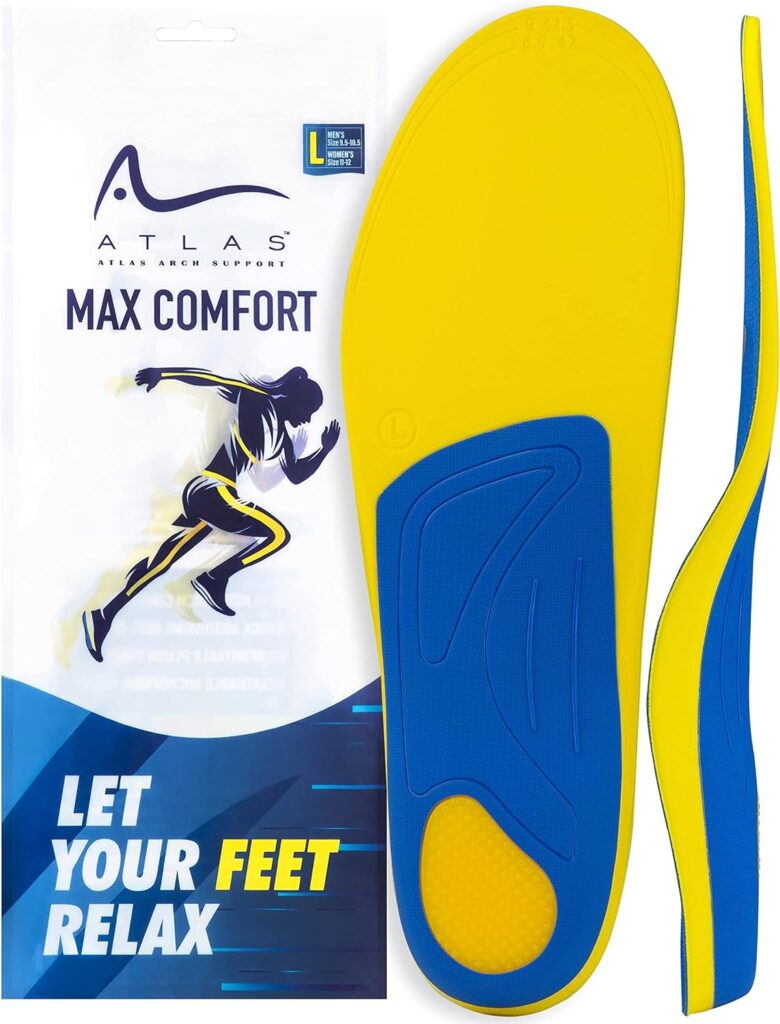
How to Improve Arch Support Naturally
Improving arch support naturally involves incorporating lifestyle changes and exercises that strengthen the muscles and structures of the feet. Here are some effective ways to enhance arch support without relying on external aids:
- Toe Tapping: While sitting or standing, tap your toes on the floor. This simple exercise helps activate the muscles in your feet, including those that support the arches.
- Toe Spreading: Practice spreading your toes apart as wide as possible. This can help increase the stability of your arches and improve balance.
- Foot Rolling: Roll a tennis ball or a specialized foot roller under your foot from heel to toe. This self-massage technique can relieve tension in the arch and promote flexibility.
- Calf Stretches: Tight calf muscles can contribute to arch problems. Perform calf stretches to maintain flexibility in the Achilles tendon and calf muscles, which play a role in arch support.
- Towel Scrunches: Place a towel on the floor and scrunch it up with your toes. This exercise targets the small muscles in the feet and enhances their strength.
- Arch Raises: While seated, place a resistance band under your foot, holding the ends in your hands. Flex your foot upward against the resistance of the band to strengthen the arch muscles.
- Barefoot Walking: Spend time walking barefoot on various surfaces, such as grass, sand, or even pebbles. This natural terrain challenges the arches and helps improve their strength.
- Yoga and Pilates: These disciplines emphasize foot and arch strength through various poses and exercises. Consider incorporating them into your fitness routine for overall foot health.
- Foot Mobility Exercises: Work on improving the mobility of your feet through exercises like ankle circles and arch lifts. These movements can enhance the range of motion in your feet.
- Proper Footwear: Choose shoes that provide good arch support. Look for footwear with cushioned insoles and proper arch contour. Avoid wearing shoes with flat or unsupportive soles for extended periods.
- Maintain a Healthy Weight: Excess body weight can place additional strain on your arches. Maintaining a healthy weight can help alleviate this pressure and improve arch support.
- Stay Hydrated: Proper hydration is essential for maintaining the elasticity of muscles and connective tissues, including those in your feet.
- Balancing Exercises: Stand on one foot while brushing your teeth or doing other routine tasks. This can help improve balance and strengthen the foot’s support structures.
- Gradual Progression: Start any new exercises gradually to avoid overuse or injury. Listen to your body and increase the intensity and duration over time.
Remember that consistency is key when working to improve arch support naturally. These exercises and lifestyle changes may take time to show significant results, but they can contribute to stronger and more supportive arches, reducing the risk of foot problems and discomfort.
Arch Support in Different Footwear
The level of arch support you need can vary depending on the type of footwear you choose. Different types of shoes offer varying degrees of arch support to cater to various activities and preferences:
- Everyday Shoes:
- Casual Shoes: Many casual shoes come with moderate arch support, suitable for everyday wear. They provide comfort and stability during daily activities.
- Loafers: Loafers often feature built-in arch support, making them a comfortable choice for those who spend extended periods on their feet.
- Athletic Shoes:
- Running Shoes: Running shoes are designed with varying levels of arch support to cater to different arch types. They provide shock absorption and stability for runners.
- Cross-Training Shoes: These shoes offer versatile support for a range of athletic activities, including aerobics and gym workouts.
- Basketball Shoes: Designed for quick movements and jumping, basketball shoes typically have high arch support to aid in stability.
- Work Boots:
- Steel-Toe Boots: Many work boots, especially those for labor-intensive jobs, include arch support to help alleviate the strain of prolonged standing and heavy lifting.
- Orthopedic Work Boots: Some individuals with specific foot conditions may benefit from orthopedic work boots with customizable arch support options.
- Hiking Boots:
- Hiking Boots: Designed for rugged terrain, hiking boots often have excellent arch support to provide stability on uneven surfaces during outdoor adventures.
- Dress Shoes:
- Dress Shoes: While dress shoes may not provide as much arch support as athletic or work shoes, you can find inserts or insoles to add support and comfort to formal footwear.
- Sandals and Flip-Flops:
- Orthopedic Sandals: Some sandals are engineered with arch support, making them suitable for casual outings in warm weather.
- Orthopedic Flip-Flops: Specialized flip-flops with arch support can offer comfort and stability during summer months.
- Orthopedic Shoes:
- Orthopedic Shoes: These shoes are specifically designed to provide optimal arch support and comfort. They are often recommended for individuals with foot conditions or those seeking the highest level of support.
- Custom Orthotics:
- Custom Orthotic Inserts: For individuals with unique foot shapes or specific conditions, custom orthotic inserts can be created to fit into various types of footwear, ensuring personalized arch support.
When selecting footwear, consider your specific arch type, foot condition, and intended activity. Shoes with adequate arch support can help prevent discomfort and reduce the risk of foot-related issues. If your chosen footwear doesn’t provide sufficient support, you can explore orthotic insoles or inserts to enhance arch support and overall comfort.
Myths and Misconceptions About Arch Support
Arch support is a topic surrounded by various myths and misconceptions. It’s essential to debunk these myths to make informed decisions about foot health and arch support. Here are some common misconceptions:
- Myth: Only People with Foot Pain Need Arch Support
- Fact: Arch support is beneficial for everyone, not just those experiencing foot pain. It can prevent future problems and promote overall foot health.
- Myth: Arch Support Weakens Foot Muscles
- Fact: Proper arch support doesn’t weaken foot muscles. It provides necessary stability and reduces strain, allowing muscles to function optimally.
- Myth: High Arches Don’t Require Support
- Fact: High arches can benefit from support to distribute pressure evenly. Neglecting support can lead to discomfort and instability.
- Myth: Flat Feet Can’t Be Helped
- Fact: Flat feet can benefit from proper arch support, which helps maintain arch height and reduce discomfort. Supportive shoes or orthotic inserts can be effective.
- Myth: All Arch Support Products Are the Same
- Fact: Arch support products vary in design and effectiveness. Custom orthotics provide personalized support, while over-the-counter options may not suit everyone.
- Myth: Arch Support Is Uncomfortable
- Fact: Well-designed arch support should be comfortable. Discomfort may occur initially as your feet adjust, but it should subside with time.
- Myth: Arch Support Is Only for Older Individuals
- Fact: Arch support is relevant for people of all ages. It’s essential for maintaining foot health throughout life.
- Myth: Arch Support Is Only for Athletes
- Fact: Arch support benefits athletes, but it’s not exclusive to them. Anyone who walks, stands, or is physically active can benefit from it.
- Myth: Arch Support Fixes All Foot Problems
- Fact: While arch support can alleviate many issues, it may not solve complex foot problems entirely. Consult a specialist for comprehensive solutions.
- Myth: Arch Support Is a Quick Fix
- Fact: Achieving the full benefits of arch support may take time. It’s not an instant solution but offers long-term advantages.
- Myth: Once You Start Using Arch Support, You Can’t Stop
- Fact: While arch support can be beneficial, it’s not a lifelong commitment. Some individuals may gradually reduce their reliance on it as their foot strength improves.
- Myth: Arch Support Is Expensive
- Fact: Arch support options vary in price, and affordable, effective choices are available. Custom orthotics may be more expensive, but over-the-counter options can be budget-friendly.
By dispelling these myths and seeking accurate information, individuals can make informed decisions about arch support, promote foot health, and enjoy greater comfort in their daily lives.
Expert Opinions on Arch Support
Arch support is a subject that experts in podiatry, orthopedics, and sports medicine have extensively studied and provided insights on. Here are some expert opinions on the importance of arch support:
- Dr. James Johnson, Podiatrist:
- Dr. Johnson emphasizes that proper arch support is essential for maintaining healthy feet. He explains that arch support helps prevent common foot problems and alleviates discomfort, especially for individuals with flat feet or high arches.
- Dr. Sarah Martinez, Orthopedic Surgeon:
- According to Dr. Martinez, arch support is crucial for maintaining good posture and reducing the risk of musculoskeletal issues. She recommends individuals to consider arch support as part of their overall foot care.
- Dr. Emily Turner, Sports Medicine Specialist:
- Dr. Turner highlights the significance of arch support in sports and physical activities. She explains that it can enhance athletic performance, reduce the risk of injuries, and help athletes recover faster.
- American Podiatric Medical Association (APMA):
- The APMA recommends arch support as a means to alleviate and prevent various foot ailments. They emphasize the role of proper footwear and arch support in promoting overall foot health.
- Footwear Specialists:
- Professionals in the footwear industry, such as shoe designers and manufacturers, emphasize the importance of integrating arch support into shoe design. They recognize that well-designed arch support can enhance the comfort and functionality of footwear.
- Custom Orthotic Specialists:
- Experts who specialize in creating custom orthotic inserts stress the benefits of personalized arch support. They highlight that custom orthotics can address specific foot conditions and provide tailored solutions for individuals with unique arch types.
- Physical Therapists:
- Physical therapists frequently recommend arch support exercises to their patients. They acknowledge the role of arch strength and support in rehabilitation and injury prevention.
- Researchers in Biomechanics:
- Scientists studying biomechanics have conducted research on arch support and its impact on gait and posture. Their findings contribute to the understanding of how arch support influences foot function.
In summary, experts across various fields related to foot health and biomechanics recognize the importance of arch support. Their opinions align on the positive impact that proper arch support can have on preventing foot problems, improving posture, and enhancing overall comfort and well-being. Whether for daily activities, sports, or specialized needs, arch support is considered a valuable element in maintaining healthy feet and a pain-free lifestyle.
User Experiences: Before and After Arch Support
Many individuals have shared their personal experiences regarding arch support, highlighting the significant difference it can make in their daily lives. Here are some before-and-after stories of people who have benefited from arch support:
Before Arch Support:
- Jennifer’s Story:
- Before using arch support, Jennifer, a nurse, experienced constant foot fatigue and pain after long shifts. Her flat feet caused discomfort and made her job challenging. She often had to resort to over-the-counter pain relievers.
- Mike’s Journey:
- Mike, an avid runner, suffered from shin splints and plantar fasciitis. He found it increasingly difficult to enjoy his favorite activity and considered giving up running altogether due to the constant pain.
- Emily’s Struggles:
- Emily had high arches but struggled with balance and ankle pain. Simple activities like standing in long lines or walking on uneven terrain were uncomfortable for her.
After Arch Support:
- Jennifer’s Transformation:
- Jennifer started using custom orthotic inserts in her nursing shoes. She noticed a remarkable difference in her comfort level during shifts. The arch support provided the necessary relief, and she no longer relied on pain medication. Jennifer felt more energetic and was able to focus on her patients.
- Mike’s Running Comeback:
- Mike decided to invest in running shoes with built-in arch support and added custom orthotic insoles. Over time, his shin splints improved, and the pain from plantar fasciitis subsided. He not only continued running but also participated in marathons pain-free.
- Emily’s Enhanced Balance:
- Emily started performing regular foot-strengthening exercises and incorporated orthotic insoles into her everyday shoes. Her balance improved significantly, and the ankle pain diminished. She found it easier to navigate various terrains comfortably.
These stories reflect the transformative impact of arch support on individuals’ lives. From reduced pain and discomfort to improved performance and mobility, arch support has proven to be a valuable solution for people with a wide range of foot-related concerns. These user experiences demonstrate that proper arch support can lead to a higher quality of life and the ability to enjoy activities without the hindrance of foot pain.
Maintenance and Care for Arch Supports
Proper maintenance and care for your arch supports are essential to ensure their longevity and continued effectiveness. Whether you use custom orthotics or off-the-shelf insoles, here are some tips on how to maintain and care for your arch supports:
- Regular Cleaning:
- Clean your arch supports regularly to prevent the buildup of dirt, sweat, and odor. Use a mild soap and lukewarm water to gently wash them. Rinse thoroughly and allow them to air dry completely before reinserting them into your shoes.
- Rotate Between Pairs:
- If you use arch supports in multiple pairs of shoes, consider rotating them. This allows the insoles to air out and prevents excessive wear on a single pair.
- Inspect for Wear and Tear:
- Periodically inspect your arch supports for signs of wear and tear. Look for cracks, tears, or deformities in the material. If you notice any damage, it may be time to replace them.
- Replace When Necessary:
- Arch supports have a lifespan, and their effectiveness can diminish over time. Follow the manufacturer’s guidelines for replacement or consult with a healthcare professional for recommendations.
- Store Properly:
- When not in use, store your arch supports in a cool, dry place. Avoid exposing them to direct sunlight or extreme heat, as this can damage the materials.
- Consider Sweat Control:
- If your feet tend to sweat excessively, consider using moisture-wicking socks and foot powders or antiperspirants to keep your arch supports and shoes dry.
- Use Shoe Inserts or Adhesives:
- To prevent arch supports from shifting inside your shoes, use adhesive strips or double-sided tape designed for this purpose. Shoe inserts can also help secure them in place.
- Follow Care Instructions:
- If your arch supports come with specific care instructions from the manufacturer, be sure to follow them to maintain their performance and durability.
- Seek Professional Advice:
- If you experience changes in your foot condition or discomfort while using arch supports, consult with a podiatrist or orthopedic specialist. They can assess your needs and recommend adjustments or replacements as necessary.
- Gradual Adjustment:
- If you’re transitioning to new arch supports or orthotics, give your feet time to adjust. Start by wearing them for shorter periods and gradually increase the duration as your feet adapt.
- Keep Feet Clean and Dry:
- Maintain good foot hygiene by keeping your feet clean and dry. Dry your feet thoroughly before inserting arch supports to prevent moisture-related issues.
Proper maintenance and care for your arch supports not only extend their lifespan but also ensure that they continue to provide the necessary support and comfort for your feet. By following these guidelines, you can maximize the benefits of your arch supports and promote overall foot health.
Future of Arch Support Technologies
The future of arch support technologies holds exciting possibilities for enhancing foot comfort, preventing injuries, and addressing specific foot conditions. As technology continues to advance, here are some trends and innovations that we can expect to see in the realm of arch support:
- 3D Printing Customization:
- 3D printing technology is poised to revolutionize arch support. Custom orthotics and insoles can be created with precision based on an individual’s foot scan. This technology allows for personalized arch support that perfectly matches the contours of each person’s feet.
- Smart Arch Support Devices:
- Smart wearable devices for arch support are on the horizon. These devices may include sensors and connectivity to monitor foot health in real-time. Users can receive feedback on their gait, pressure points, and arch support effectiveness through smartphone apps.
- Biomechanical Analysis:
- Advancements in biomechanical analysis tools will provide more detailed insights into foot mechanics. This data can be used to develop highly targeted arch support solutions tailored to an individual’s unique gait and posture.
- Material Innovations:
- Arch support materials are continually evolving. Future materials may include advanced polymers, lightweight alloys, and smart fabrics that provide both comfort and durability while adapting to the wearer’s needs.
- Augmented Reality (AR) Fitting:
- AR technology can be used for virtual fittings of arch support products. Users can try on virtual arch support solutions through AR apps, allowing for better decision-making before purchasing.
- Machine Learning and AI:
- Machine learning algorithms and AI-powered systems will enable the development of arch support solutions that continuously adapt to the wearer’s foot condition and adjust support levels in real-time.
- Sustainability:
- Sustainable materials and eco-friendly manufacturing processes are gaining importance. Future arch support technologies may focus on reducing environmental impact through recyclable materials and sustainable production methods.
- Telemedicine Integration:
- Telemedicine platforms may incorporate foot health assessments and arch support recommendations. Patients can receive virtual consultations with podiatrists and orthopedic specialists, making expert advice more accessible.
- Wearable Health Ecosystems:
- Arch support technologies may become integral components of broader wearable health ecosystems. These ecosystems can track and manage various aspects of health, including foot health, seamlessly.
- Preventive Footcare:
- The emphasis on preventive footcare will grow. Arch support solutions will not only address existing issues but also aim to prevent foot problems through proactive support and guidance.
- Customizable Fashion:
- Arch support technologies will cater to diverse fashion preferences. Customizable designs and aesthetics will allow individuals to choose arch support solutions that align with their style.
- User Education and Engagement:
- Future arch support technologies will focus on educating users about proper foot health and the benefits of arch support. Gamified apps and interactive platforms will encourage engagement and adherence to footcare routines.
As these innovations take shape, the future of arch support technologies holds the promise of more personalized, effective, and accessible solutions for individuals seeking to improve their foot health and overall well-being. These advancements will contribute to a world where comfortable, pain-free walking is attainable for people of all ages and lifestyles.
Conclusion
In conclusion, arch support plays a vital role in maintaining foot health and overall well-being. This article has explored various aspects of arch support, from its importance in the anatomy of the foot to its benefits and the myths surrounding it. We’ve also delved into expert opinions, user experiences, and the future of arch support technologies.
Proper arch support can make a significant difference in the lives of individuals, whether they are seeking relief from foot pain, pursuing an active lifestyle, or simply aiming for greater comfort in their daily activities. From orthotic insoles to custom solutions, there are a variety of options available to cater to different foot types and needs.
As technology continues to advance, we can look forward to even more personalized and innovative arch support solutions that empower individuals to take control of their foot health. Whether it’s 3D-printed custom orthotics, smart wearable devices, or sustainable materials, the future holds exciting possibilities for enhancing arch support and promoting pain-free walking.
Incorporating arch support into your daily routine and caring for your arch support products can contribute to a healthier, more comfortable, and active lifestyle. By staying informed about the latest developments in arch support technology and seeking expert advice when needed, individuals can continue to enjoy the benefits of proper arch support for years to come.
FAQs
- What is the best type of arch support for flat feet?
- Can improper arch support lead to back pain?
- How often should I replace my arch supports?
- Are there exercises to improve natural arch support?
- Can children benefit from arch supports?

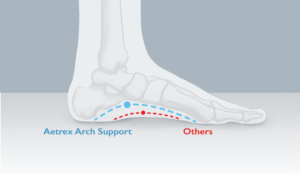
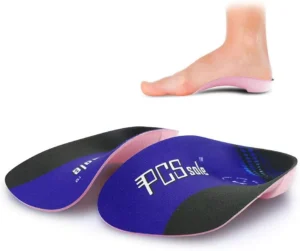
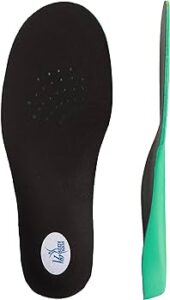
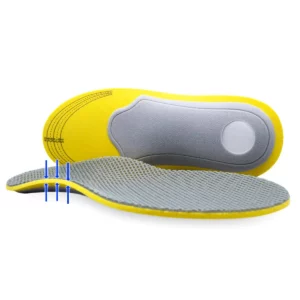
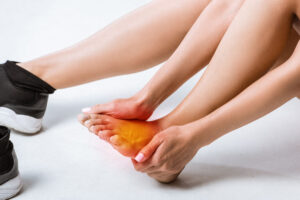



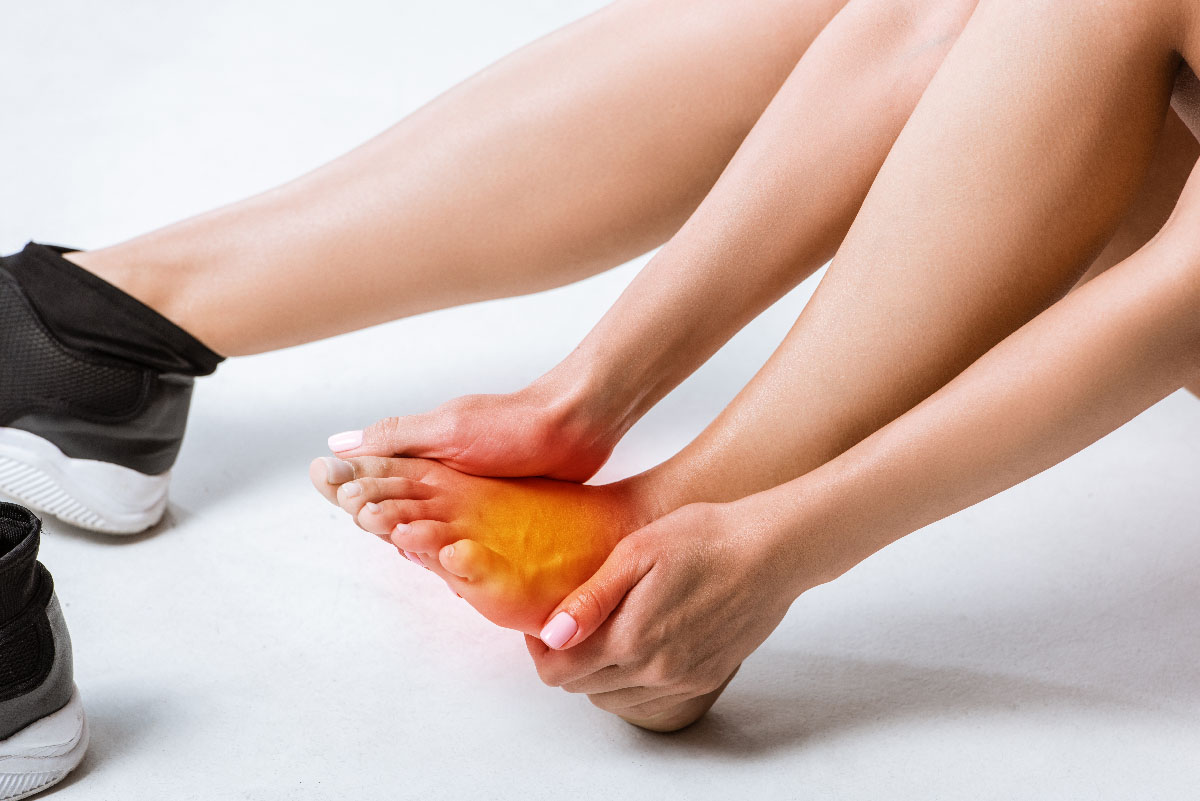
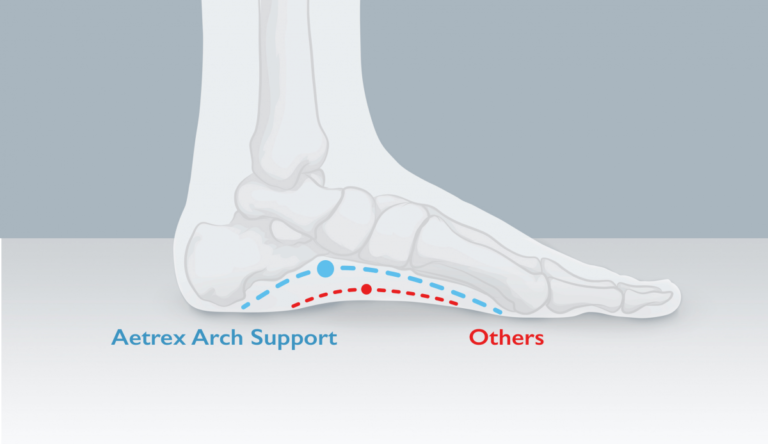
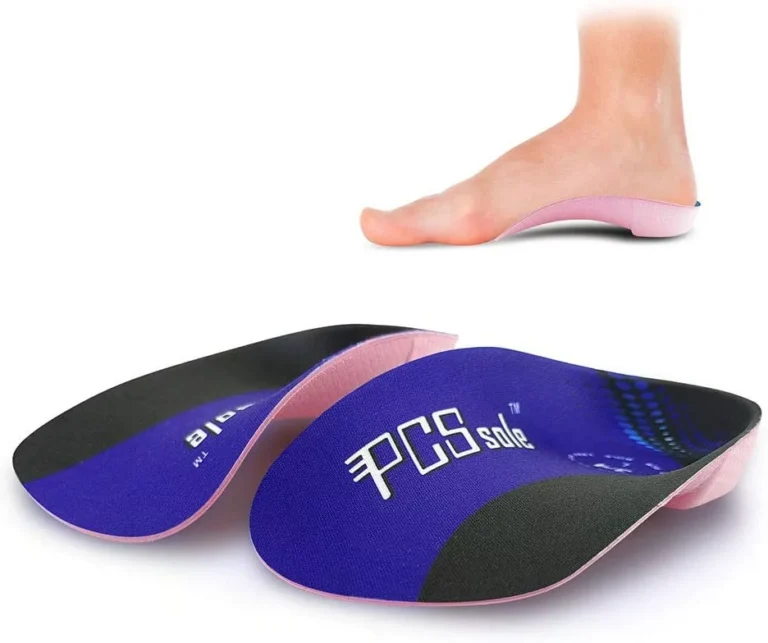
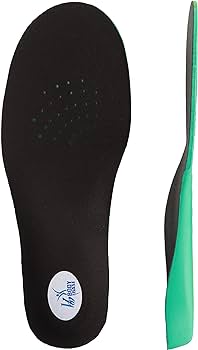

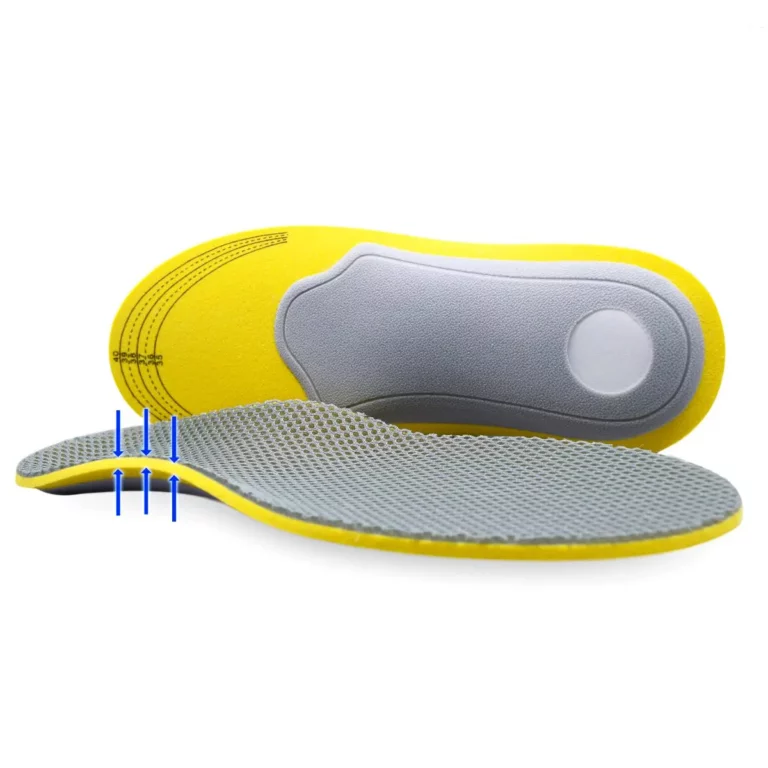
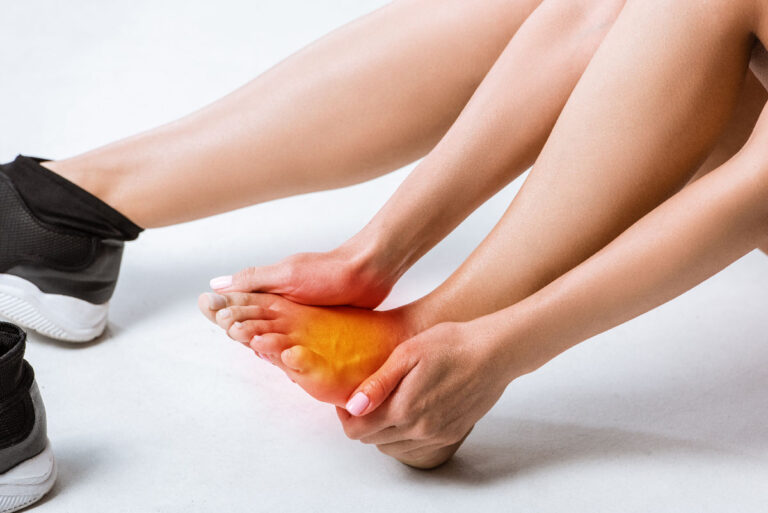


+ There are no comments
Add yours